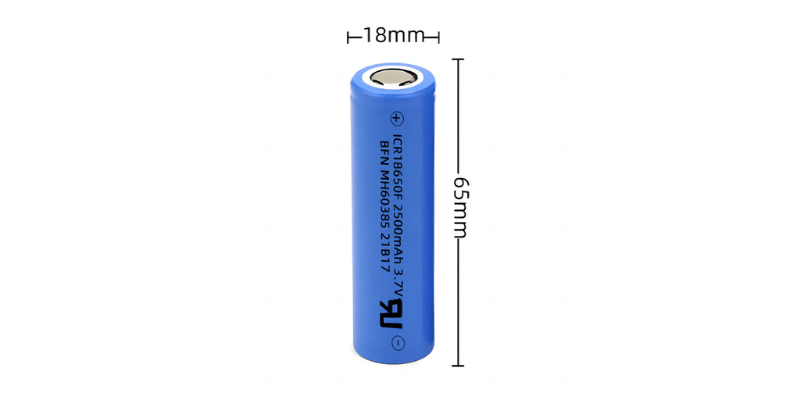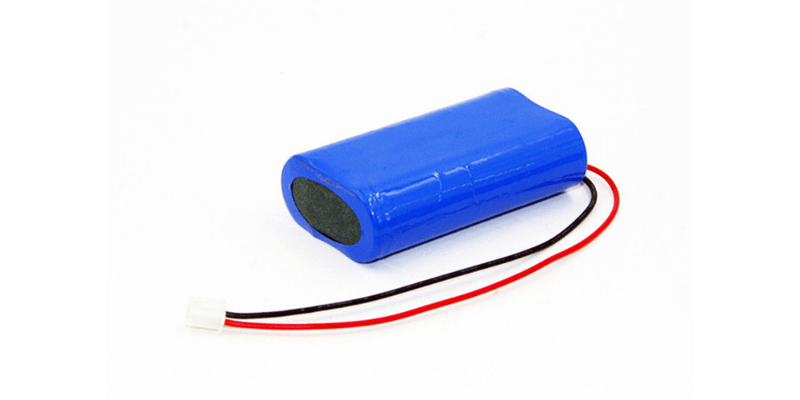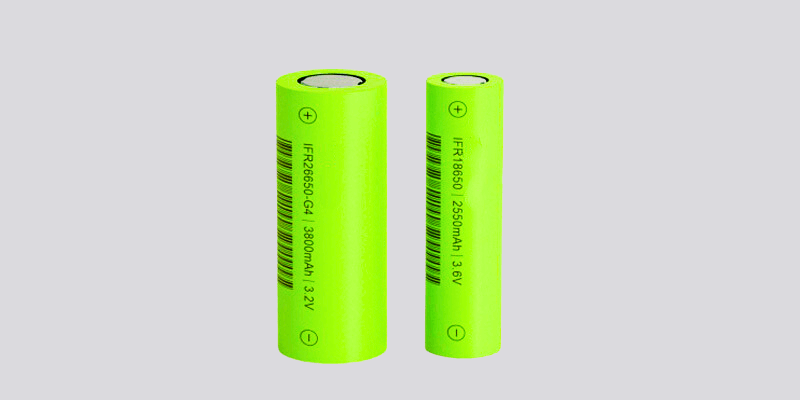Nøgle takeaways:
- 18650 Batterier: Kompakte, overkommelige, ideelle til forbrugerelektronik.
- 26650 Batterier: Større, højere kapacitet, perfekt til applikationer med høj dræning.
18650 og 26650 repræsenterer to af de mest populære lithium-ion batteri størrelsesklasser. Men hvad er det egentlig, der adskiller dem? Denne omfattende vejledning giver en dybdegående sammenligning af 18650 vs 26650 batterier.
Overblik: 18650 vs 26650
| Parameter | 18650 batteri | 26650 batteri |
| Diameter | 18 mm | 26 mm |
| Længde | 65 mm | 65 mm |
| Kapacitet | 1200-3600 mAh | 2500-6000 mAh |
| Spænding | 3,6-3,7V | 3,6-3,7V |
| Ansøgninger | Laptops, lommelygter, vapes | Elværktøj, elbiler, enheder med høj dræning |
Lad os nu udforske nøglefaktorerne i detaljer…
18650 Batterier – Det kompakte kraftcenter
18650 li-ion-batteriet tilbyder en optimal balance mellem energitæthed og bærbarhed.
De vigtigste applikationer omfatter:
- Laptop batteripakker
- High-end lommelygter
- Vaping enheder
- Power banker
Fordele:
Mindre størrelse, lavere omkostninger, let tilgængelig, tilstrækkelig kapacitet og strømforsyning til mange forbrugerapplikationer.

Begrænsninger:
Lavere kapacitet sammenlignet med alternativer som 26650, ikke ideel til applikationer med høj dræning, færre opladningscyklusser generelt.
Sammenfattende har 18650 en fremragende balance mellem moderat effekt og bærbar størrelse.
26650 batterier – Frigør maksimal ydeevne
Med en diameter på 26 mm tilbyder 26650 væsentlig højere kapacitet og strømhåndteringsevne.
Nøgleapplikationer omfatter:
- Elværktøj
- Elektriske køretøjer
- Energilagring
- Kraftige lommelygter
Fordele:
Meget høj kapacitet, fremragende højdræningsydelse, højere energitæthed, lang levetid.
Afvejninger:
Større størrelse kan begrænse kompatibiliteten i kompakte enheder, dyrere end 18650, genererer mere varme ved meget høje udledningshastigheder.
Til roller med høj dræning, hvor vedvarende maksimal effekt er kritisk, er 26650 det bedste valg.

Detaljeret specifikationssammenligning
| Parameter | 18650 Li-ion | 26650 Li-ion |
| Diameter | 18 mm | 26 mm |
| Længde | 65 mm | 65 mm |
| Kapacitetsområde | 1200-3600 mAh | 2500-6000 mAh |
| Spændingsområde | 3,6-3,7V | 3,6-3,7V |
| Maks. Udledningsstrøm | 15-20A | 30-35A |
| Energitæthedsområde | 150-250Wh/L | 250-400Wh/L |
| Cyklus liv | 300-500 cyklusser | 500-1000 cyklusser |
Observationer:
- 26650 har 46 % mere overflade, hvilket muliggør højere kapacitet.
- Afladningskapacitet er overlegen på 26650.
- Energitæthed, levetid og effektivitet er højere med 26650.
- Spændingsområde er ens, da begge bruger lithium-ion kemi.
Sammenligning af ydeevne i den virkelige verden
26650 klarer sig bedre end 18650 på tværs af brugsmetrics:
- 70 % længere køretid
- 50-75 % højere udledningshastigheder
- Bedre varmeafledning under meget høje belastninger
- 5-10 % større energieffektivitet
- 2x levetid – 800 cyklusser mod 400 cyklusser typisk
Så 26650 viser klare fordele i applikationer med høj dræning, der kræver maksimal, vedvarende strømforsyning.

Batterisikkerhedstips og bedste praksis
Lithium-ion-batterier er generelt sikre, når de håndteres korrekt, men det er vigtigt at tage forholdsregler som:
- Brug den anbefalede oplader og undgå overopladning
- Opbevaring af batterier korrekt – køligt, tørt sted
- Forebyggelse af kortslutninger og fysiske skader
- Overvågning af temperaturer under brug
- Genbrug af batterier på udpegede faciliteter
At følge grundlæggende sikkerhedsforanstaltninger rækker langt.
Valg af det rigtige batteri – 18650 eller 26650?
Overvej enhedsdimensioner, strømkrav, tilsigtet driftstid, omkostninger og høje dræningsbehov. 18650 kapacitet/størrelse passer til de fleste forbrugerelektronik. Men 26650 er bedre til avancerede højeffektapplikationer.

Ofte stillede spørgsmål
Hvordan sammenligner 18650 og 26650 batterier for vaping-enheder?
Til de fleste dampformål er 18650-kapaciteten og afladningsydelsen tilstrækkelig. Men avancerede vapers vil måske have den ekstra kraft fra en 26650 til sub-ohm-opsætninger, der kræver meget høj watt.
Kan en 26650 erstatte en 18650 i min bærbare computers batteri?
Ikke anbefalet. Den større 26650 passer sandsynligvis ikke ordentligt i den bærbare computers batterirum. Hold dig til OEM-batterispecifikationerne.
Hvor mange 26650 celler er nødvendige for at matche et 48V bly-syre batteri?
Med den 26650 nominelle spænding omkring 3,7V, vil du have brug for 48V / 3,7V = 13 celler forbundet i serie for at lig med en 48V bly-syre batterispænding.
Til en elcykel, er det bedre at bruge 18650 eller 26650 batteripakker?
For e-cykler giver den højere kapacitet 26650 mening at udvide rækkevidden. Bare sørg for korrekt montering for at rumme den større batteristørrelse.
Hvordan bortskaffer jeg gamle 18650 og 26650 batterier sikkert?
Find et velrenommeret lithium-ion batteri genbrugsanlæg i din region. Nogle forhandlere accepterer også genbrug af batterier. Smid aldrig lithiumbatterier i skraldespanden.
Konklusion
18650’erens kompakte størrelse gør den velegnet til forbrugerelektronik, mens 26650’eren med høj kapacitet udmærker sig i applikationer med høj dræning. Hver batteristørrelse tjener forskellige behov. Vi håber, at denne vejledning har hjulpet dig med at vælge det ideelle batteri til din specifikke brug.
Relaterede artikler:

